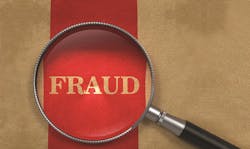There are currently 5,000 ONVIF-conformant products, and that number is growing. In the first half of 2015 alone, the number of conformant products increased by 15 percent; yet, many companies are incorrectly or fraudulently claiming conformance in advertisements and product marketing materials.
How do you know if a device or client is ONVIF-conformant? What if a manufacturer makes false claims of conformance in its advertisements? Is ONVIF policing the market for fraudulent uses of its brand? What exactly is ONVIF’s role in the industry then?
These are all good questions and deserve good answers, and are a crucial part of ONVIF’s ongoing conformance and education campaign, which seeks to address false claims of conformance by manufacturers.
Since ONVIF plays an important role in the industry, the credibility of its brand is crucial to its future success. Since its inception in 2008, it has created specifications that have made more physical security devices and clients from different manufacturers work together more successfully.
With three different profiles currently available and two additional ones in development, ONVIF strives to meet the needs of the physical security market, developing profiles and adjusting its focus in response to industry trends and end-user demand.
As an organization, the credibility of the brand influences the adoption of standards, the organization’s future and how it is perceived. False claims do happen in every industry, varying from exaggerated technical specifications to questionable compatibility claims between products.
As ONVIF profiles have increased in deployment and acceptance globally, we have seen a few issues with claims of conformance or misuse of our trademarks.
Misuse/Violation of ONVIF’s Brand
ONVIF’s standards specify minimum operational requirements so the conforming devices can guarantee interoperability at the most fundamental level. ONVIF’s role is to find the basic commonalities of the different offerings and provide an option for interoperability that meets the needs of a majority — maybe 75 to 80 percent — of the market. The specifications are either adopted voluntarily by the market, or through international standards-issuing organizations, such as the International Electrotechnical Commission (IEC) or the International Standardization Organization (ISO).
Later this year, false conformance claims will be able to be reported via our website. Consumers, integrators and anyone else will be able to contact ONVIF’s administrative office using a web form if they believe an invalid claim of conformance is occurring.
Education Initiative
Our ongoing conformance and education initiatives have shown that a vast majority of ONVIF members are able to comply with the conformance process without issue.
In the last year, we have found that the invalid claims are often the result of a lack of understanding; thus, we are working hard to communicate better with our members about what is required of them. For example, one area we need to educate the market about is regarding the use of rebranded OEM products. ONVIF certifications on OEM products are not transferable, and so members that OEM a product which already has a claim of conformance must retest and submit new documentation to show valid conformance.
We did find a very small number of manufacturers that had decided to leave ONVIF but were still using our logo. In these cases, we notified the violating companies and instructed them to immediately cease advertising that their products are ONVIF-conformant and from using the logo.
Additionally, we has reiterated the conformance process and Rules of Membership to member manufacturers that claim conformance without having submitted the requested paperwork to verify conformance.
However, to maintain the integrity of the brand going forward, we believe that ongoing education and communication with our members is crucial when it comes to accurately labeling products as ONVIF-compliant. The market will continue to see speaking engagements and educational sessions at major trade shows on our mission and conformance process, as well as media coverage to provide further education on conformance.
When a misuse/violation is reported, ONVIF has official channels through which member complaints of non-conformance can and have been addressed. Thus far, we have seen an increase in reports of conformance issues. We are encouraged by this feedback because it confirms that the market values the standards and is taking an active role in helping to ensure their integrity.
Conformance Testing Tools
Two other important steps have also been taken to augment enforcement efforts and allow for increased visibility and clarity of the conformance process. In April, ONVIF released its first Client Test Tool to members — created in response to industry requests for increased accountability in the conformance of clients. The Client Test Tool is available to members and allows independent verification that clients, such as building management systems and video management systems, have been successfully tested with several ONVIF-conformant devices for Profile S, Profile G and Profile C.
The organization’s new “Observer” member level was also created in response to feedback from members of the security industry. Observer membership lets non-manufacturers join ONVIF — granting industry stakeholders, such as systems integrators, A/Es, consultants and product reviewers, access to our Network Interface Specification test tools and Client Test Tool, and the ability to independently verify conformance between two specific products.
We also host online member forums so questions about the conformance process can be posted and addressed by the ONVIF community. Member companies can also test their products for conformance at our Developers’ Plugfests, which are typically offered twice a year at different locations around the globe.
Interoperability
We continue to see an increased awareness of the importance of interoperability in general among end-users in the industry, which, in turn, reflects the need for a broad acceptance for what ONVIF provides. When it comes to conformance, it is important to remember that our profiles ensure interoperability.
As a member-driven consortium, we encourage members to bring their best work to market and to maintain the integrity of the brand. Ultimately, though, it is the responsibility of the manufacturer to ensure their products perform well. It is a bonus that sometimes our focus on interoperability can help reveal potential issues of quality for a manufacturer’s product.
Conformance in 2015 (and Beyond)
One of the goals of our educational campaign on conformance has been to reinforce — and in some cases provide clarification on — existing policies and processes. In the year since the launch of our conformance education campaign, we have learned that this education must be continual and address all of the different constituent groups that we serve in the market.
ONVIF will continue to focus on making multiple brands and technologies work together. Developing a specification and adhering to it establishes basic ground rules for the industry and is an acknowledgement that the proprietary model does not necessarily work as well as it has in the past.
We also will continue to solicit feedback from the security community and its members, continuing this dialog on how to keep false claims of conformance small in number.
When you see false claims of conformance — whether you are an ONVIF member, a journalist or integrator — it is important to contact us, as your help is integral in keeping the ONVIF name meaningful.
Remember that the best source for determining whether a product is officially ONVIF-conformant or not is the official website, onvif.org.
To report a false claim of conformance, email [email protected] with the relevant details.
Stuart Rawling is chairman of the ONVIF Communication Committee. Learn more about ONVIF at www.onvif.org.
About the Author

Stuart Rawling
Director of Business Development, Pelco by Schneider Electric
In his role as Director of Business Development for Pelco by Schneider Electric, Stuart Rawling manages the integration and technology partnering for the video products within the buildings business. He has extensive experience in overseeing multiple teams with different focuses and expertise, including marketing, partner/product support, business development and software engineering. He has also served Pelco in the role of Software Manager and Senior Software Engineer Group Lead. Prior to joining Pelco, Stuart worked as a software engineer for Boosails Technologies Inc. and Press Association in the UK. Rawling has also served as a member of the ONVIF Communications Committee helping with brand identity and management. Stuart holds a Master of Science degree in computing science from the University of Stirling in Stirling, Scotland.
